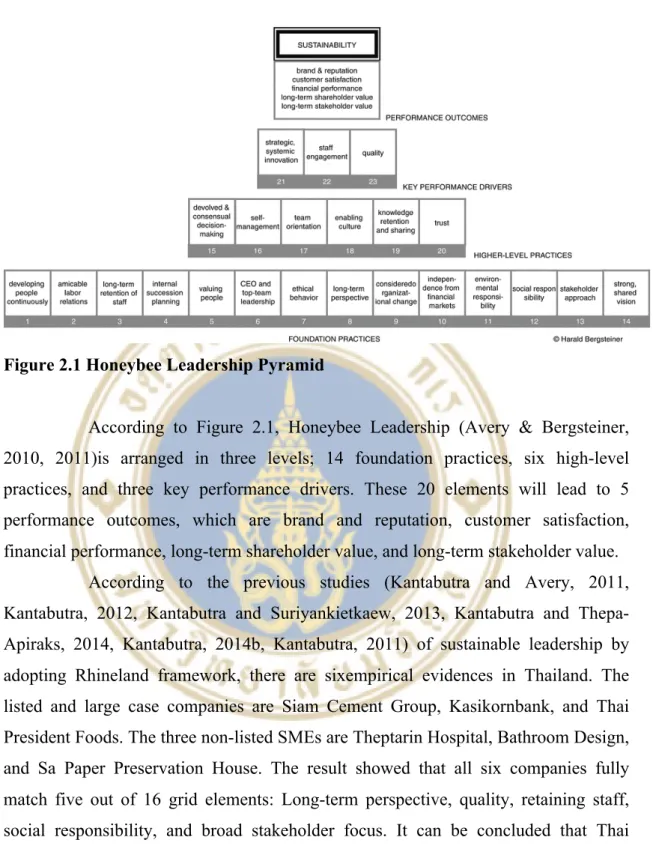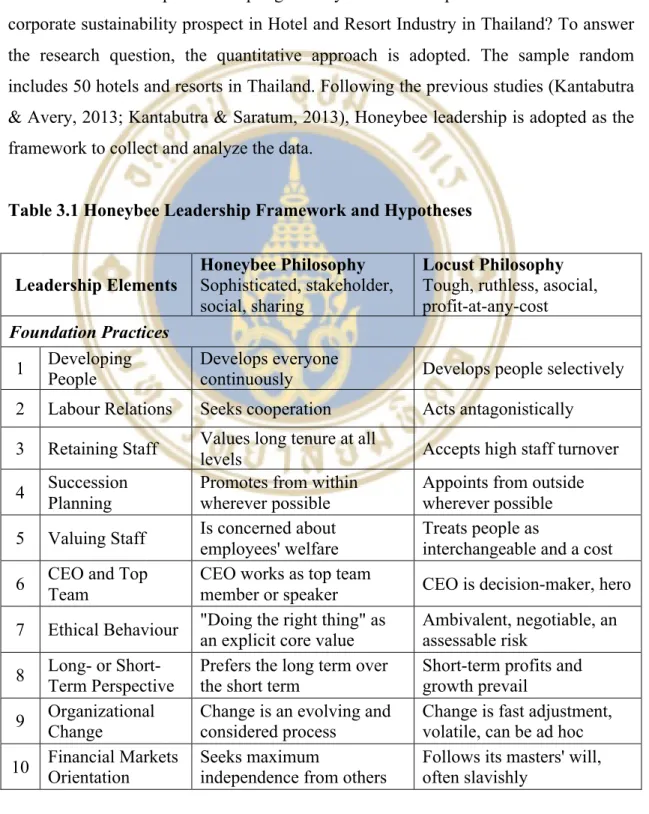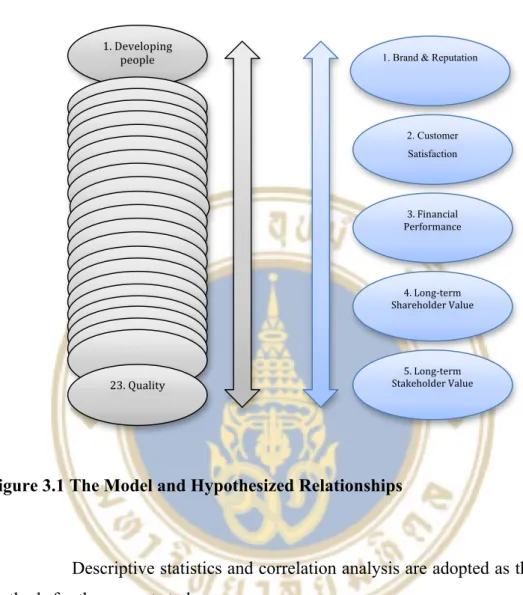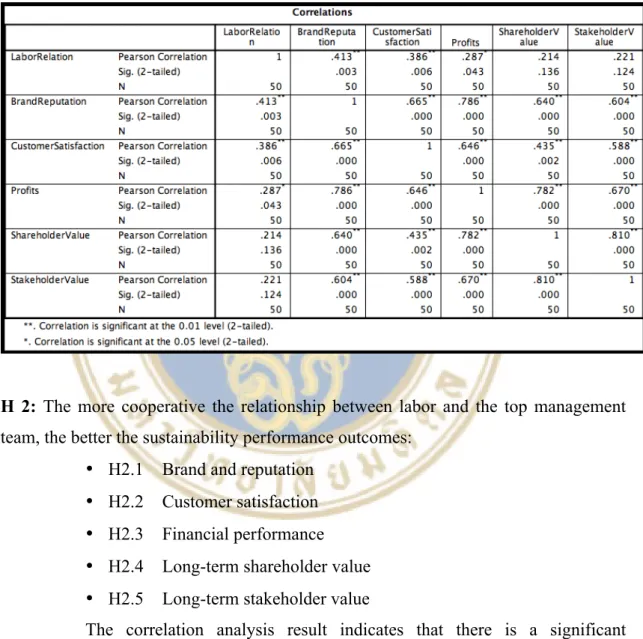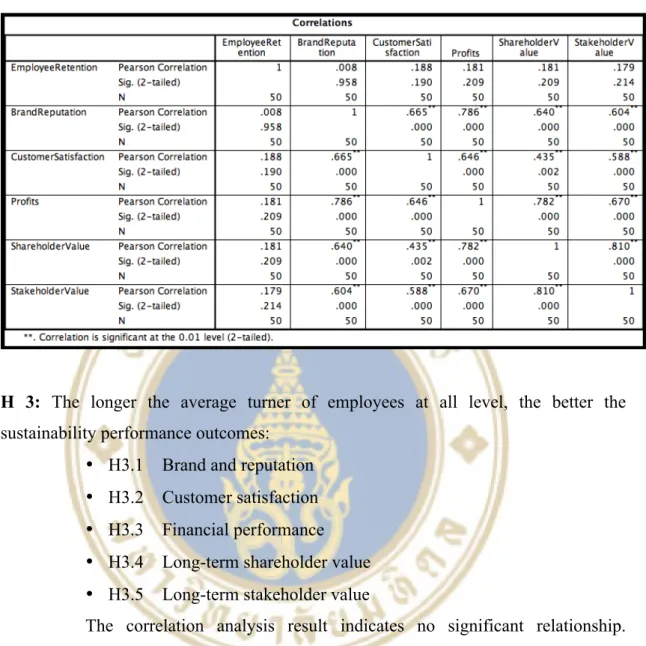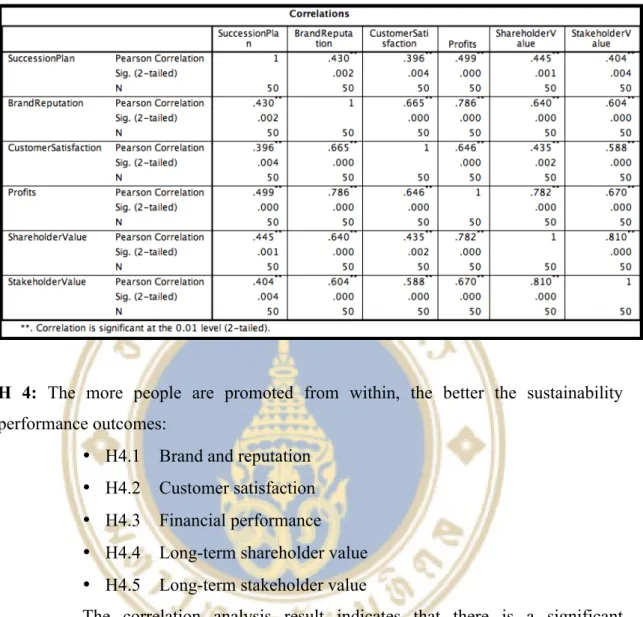The purpose of this study is to investigate the sustainable leadership in the service sector of hotels and resorts in Thailand. The result shows that the hotel and resort industry in Thailand is accordingly dealing with the sustainable leadership to gain the most benefit for the organizations. Although an important issue, only a few approaches to corporate sustainability have been explored in the Thai context.
This study therefore adopts Avery & Bergsteiner's concept of sustainable management, which has been supported by previous studies as an appropriate approach to corporate sustainability in Thailand. To determine relevance, Chapter 2 reviews the literature on sustainable management in Thailand. Corporate sustainability is becoming increasingly important for business leaders who are concerned about energy and resource scarcity, global warming, unethical business practices, and corporate reputation enhancement (Wong & Avery, 2009).
According to the previous studies (Kantabutra and Avery, 2011, Kantabutra, 2012, Kantabutra and Suriyankietkaew, 2013, Kantabutra and Thepa-Apiraks, 2014, Kantabutra, 2014b, Kantabutra, 2011) that there are six empirical evidences for sustainable leadership. in Thailand. As Sustainable Leadership has gained support in Thailand as an approach to ensuring corporate sustainability, and few quantitative studies have been conducted in companies in the hotel and resort industry, this study uses Honeybee Leadership as a framework to examine the relationship between companies.

METHODOLOGY
Financial rewards are sufficient as a motivator, no emotional commitment is expected 23 Quality is embedded in culture It is a matter of control Source: Avery and Bergsteiner (2010, pp. 36-37). After collecting all the data from 50 respondents, the data will be analyzed according to the 23 hypotheses in the next chapter.
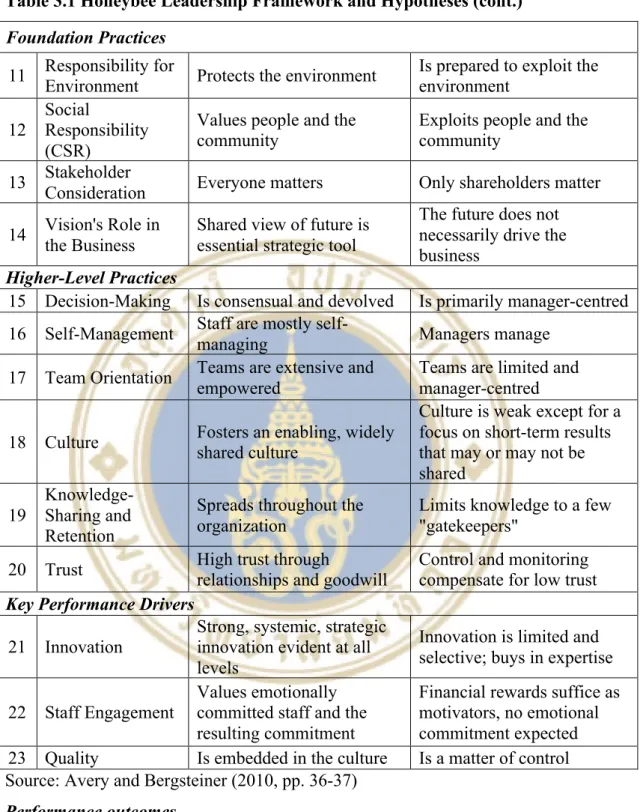
FINDING
The result of the correlation analysis indicates that there is a significant relationship between industrial relations and brand and reputation, customer satisfaction and financial performance. The result of the correlation analysis indicates that there is a significant relationship between succession planning and brand and reputation, customer satisfaction, financial performance, long-term shareholder value and long-term stakeholder value. The result of the correlation analysis indicates that there is a significant relationship between people and brand value and reputation, financial performance, long-term shareholder value and long-term stakeholder value.
The result of the correlation analysis shows that there is a significant relationship between CEO and top team and brand and reputation and customer satisfaction. The result of the correlation analysis shows that there is a significant relationship between ethics and brand and reputation, customer satisfaction, financial performance, long-term shareholder value and long-term stakeholder value. The result of the correlation analysis shows that there is a significant relationship between the long-term perspective and brand and reputation, customer satisfaction and long-term value for stakeholders.
The correlation analysis result indicates that there is a significant relationship between organizational change and brand and reputation, customer satisfaction, financial performance, long-term shareholder value and long-term stakeholder value. The correlation analysis result indicates that there is a significant relationship between environmental responsibility and brand and reputation, customer satisfaction, financial performance, long-term shareholder value and long-term stakeholder value. The correlation analysis result indicates that there is a significant relationship between stakeholder consideration and brand and reputation, customer satisfaction, financial performance and long-term stakeholder value.
The correlation analysis result indicates that there is a significant relationship between vision and brand and reputation, long-term shareholder value and long-term stakeholder value. The correlation analysis result indicates that there is a significant relationship between decision making and customer satisfaction, financial performance and long-term shareholder value. The correlation analysis result indicates that there is a significant relationship between culture and brand and reputation, customer satisfaction, financial performance, long-term shareholder value and long-term stakeholder value.
The result of the correlation analysis shows that there is a significant relationship between knowledge sharing and retention and brand and reputation, customer satisfaction, financial performance, long-term shareholder value and long-term stakeholder value. The result of the correlation analysis shows that there is a significant relationship between trust and brand and reputation, customer satisfaction, financial performance, long-term shareholder value and long-term stakeholder value. The result of the correlation analysis shows that there is a significant relationship between employee engagement and brand and reputation, customer satisfaction, financial performance, long-term shareholder value, and long-term stakeholder value.
The result of the correlation analysis shows that there is a significant relationship between quality and brand and reputation, customer satisfaction, financial performance, long-term shareholder value and long-term stakeholder value. As a result, the 23 tables above show the correlation of each hypothesis with five performance outcomes.
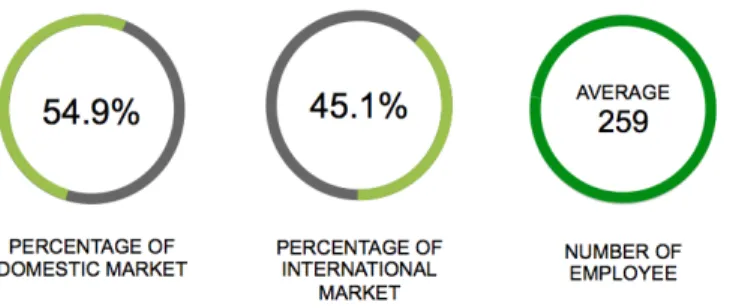
DISCUSSION
Discussion Findings
In hotels and resorts, they have a clear vision for everyone in the organization to follow, driving everyone in the same direction. In addition, most of them will have a long-term perspective to attract stakeholders such as employees, suppliers and customers, which means that this industry values about the stakeholder relationships. They are rarely recruited from outside, except only when they need specific skilled person for specific position.
Within the work environment, they respect each other, but they are friends outside the workplace, no matter what their position is. So they have a pretty good relationship within the organization even though they are in different departments. Having a good relationship also leads to a more comfortable feeling that they can trust each other as well.
The decision is not taken by one person, but will be taken by majority vote. Moreover, hotel and resort businesses always have roles and assessments to maintain the standard and quality as the main product of this industry is service. In the hotel and resort industry, it does not need highly experienced or highly educated workers.
Furthermore, they have rules, policies, processes and standards that they must monitor and follow. As mentioned above, the job doesn't require any special skills, so there are always people to replace when someone resigns, meaning the turnover rate in this industry is quite high. Because there are training programs and processes to follow, anyone can work in this industry.
In addition, social responsibility also does not affect because it gives direct effects and benefits to employees, but not the organization. Moreover, most of 50 respondents, including large and small brands, are not listed in SET, so there is no direct effect on the performance outcomes when. Innovative people are not required in this business as most of the tasks have to follow the instructions, rules and processes.
Managerial Implications
As a result, it leads to better cooperation in the workplace and they are able to trust each other. The purpose of having a training program is to develop a better quality of people, products and service in the organization. The subject of the training program is broad and broad depending on the departments of the organization.
However, there are several training programs that all employees from all departments can join together. During the training programs, there may be some small activities or case studies that the employees have to complete. They have to share knowledge, share opinions, share ideas and brainstorm to complete the tasks.
There is no guarantee that everyone will behave ethically and it is something that is difficult to train. However, the organization can guide employees on the right things to do. After employees are properly trained and prepared, they are able to accept the changes and deal with unexpected situations that may arise in the future. That is why it is important to continue training and developing for better quality for the industry.
These are three recommendations for the industry to preserve and continue to focus on the 9 corporate sustainability elements that affect all performance outcomes, which are brand and reputation, customer satisfaction, financial performance, long-term shareholder value and long-term stakeholder value. Finally, the companies are able to maintain the sustainability of the company and able to make it more sustainable in the future.
CONCLUSION
APPENDICES


